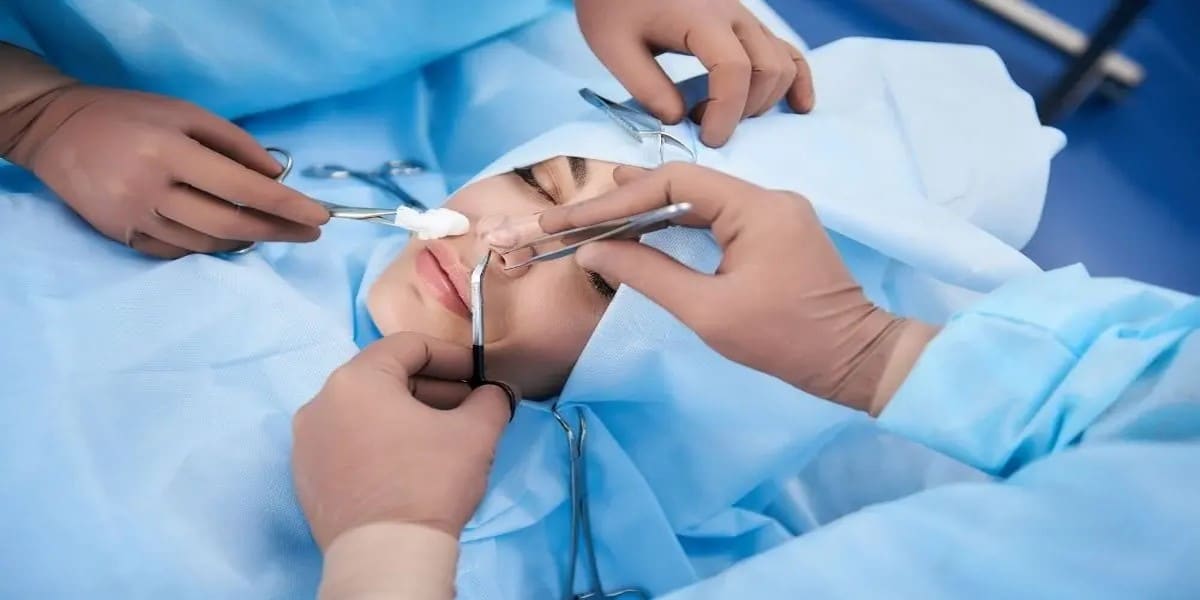Rhinoplasty
Doodlebrary
- Rhinoplasty, commonly known as a nose job, is one of the most sought-after cosmetic procedures worldwide.
- This versatile surgery can enhance appearance, improve functionality, or both.
- Whether driven by aesthetic desires or medical needs, rhinoplasty offers a range of possibilities to alter the nose’s shape, size, and structure.
- Rhinoplasty is a surgical procedure designed to reshape the nose. It can address various concerns, including:
- Cosmetic Enhancements: Many seek rhinoplasty to refine the nose’s appearance, addressing issues such as a bump on the bridge, a drooping tip, or asymmetry.
- Functional Improvements: Some undergo the procedure to correct breathing problems caused by structural issues within the nose, such as a deviated septum or enlarged turbinates.
- Reconstructive Purposes: Rhinoplasty can also repair nasal injuries or congenital deformities.
- Rhinoplasty can be performed using two primary techniques:
- Open Rhinoplasty: Involves making an incision across the columella (the strip of tissue between the nostrils). This method provides greater visibility and access to the nasal structures, allowing for more significant changes and precise adjustments.
- Closed Rhinoplasty: All incisions are made inside the nostrils, leaving no visible scars. This technique is often used for less extensive modifications and can offer a shorter recovery time.
- Preoperative Considerations
- Before undergoing rhinoplasty, several steps are taken to ensure a successful outcome:
- Consultation: A thorough consultation with a qualified surgeon is essential. The surgeon will discuss your goals, examine your nasal anatomy, and create a customized plan.
- Imaging: Digital imaging or 3D simulations can help visualize potential outcomes and set realistic expectations.
- Medical Evaluation: A comprehensive evaluation of your medical history and overall health will be conducted to ensure you are a suitable candidate for surgery.
- Post-surgery recovery is a crucial phase for achieving optimal results:
- Immediate Aftercare: Patients typically experience swelling, bruising, and discomfort in the days following the procedure. Pain is generally manageable with prescribed medications.
- Activity Restrictions: Avoid strenuous activities and follow the surgeon’s instructions regarding rest and nasal care.
- Long-Term Results: While initial swelling subsides within a few weeks, the final shape of the nose may take up to a year to fully manifest as the nasal tissues settle.
- Like any surgical procedure, rhinoplasty carries risks, including:
- Infection: Proper post-operative care is vital to minimize infection risk.
- Scarring: While incisions are strategically placed, some scarring may occur, particularly with open rhinoplasty.
- Results: In some cases, the final results may not fully align with the patient’s expectations, requiring additional procedures.
- Rhinoplasty offers a transformative option for individuals seeking to enhance their nasal appearance or address functional issues.
- With careful planning, a skilled surgeon, and adherence to post-operative care, patients can achieve satisfying results that enhance their quality of life and self-confidence.
- If you’re considering rhinoplasty, ensure you consult with a board-certified plastic surgeon to discuss your goals and determine the best approach for your unique needs.
